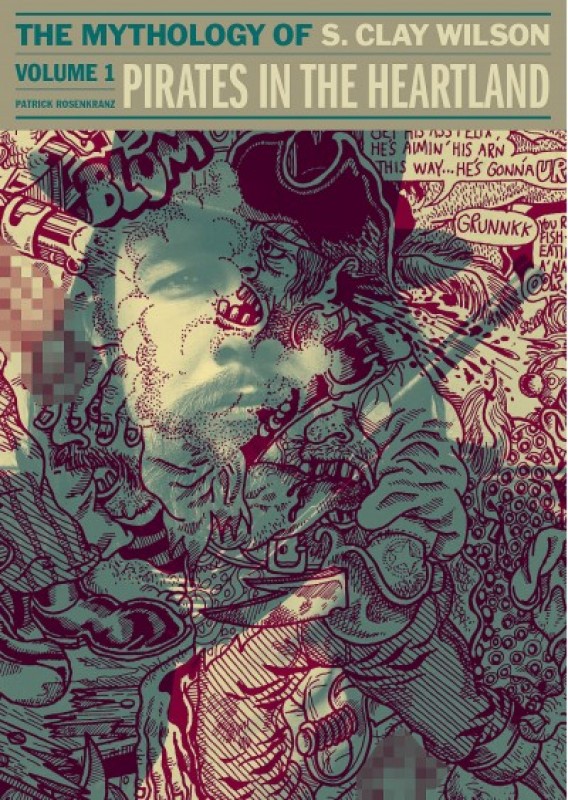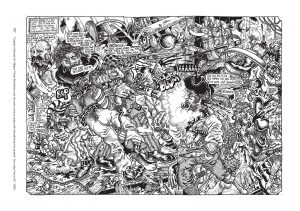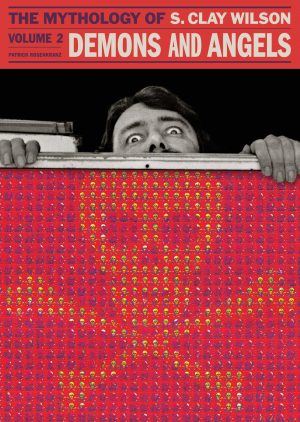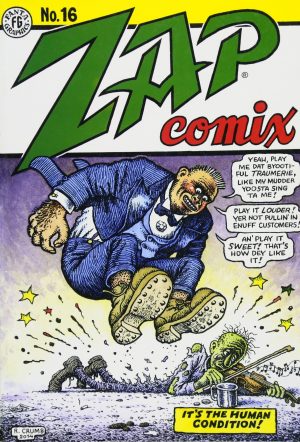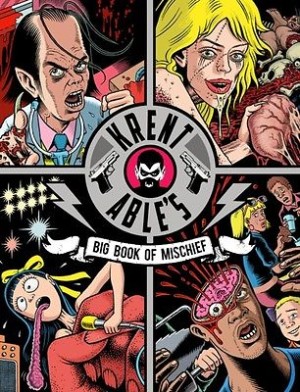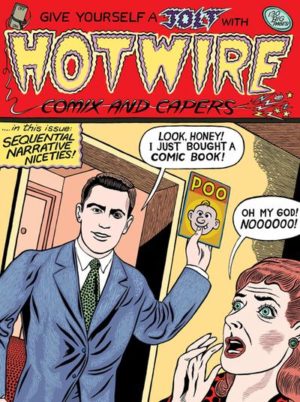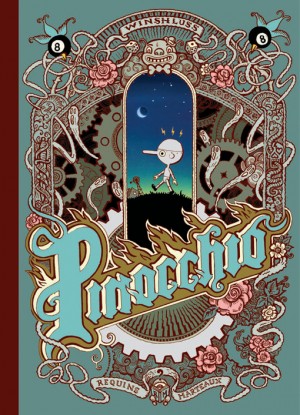Review by Win Wiacek
It’s best to begin with a warning that this book is filled with dark, violent sexual imagery and outrageous situations intended to make adults laugh and think. It contains images of nudity, extreme violence, sexual intimacy and excess – both hetero- and homosexual – and language commonly used in the privacy of the bedroom, drunken street brawls and school playgrounds whenever adults aren’t present.
Steve Clay Wilson was an uncompromising, controversial, counterculture pioneer, constantly challenging attitudes and sensitivities whilst telling the kind of cartoon tales he wanted – or perhaps had – to. Something of a contradiction to those who knew him, charming, charismatic Wilson lived life to the full and took his art seriously.
And what art! Stark, complex, shocking, incredibly detailed tableaux jumping with modern Rabelaisian content: mesmerising scenes packed with intense multi-layered busyness, crammed with outrageous, iconic characters in constant surging motion, mostly combative and hilariously violent. The hedonistic exuberance of frantic fighters rejoicing in the wild freedom is exemplified by bikers, cowboys, pirates, bull dykes and devils, augmented by other violent ne’er-do-wells, grotesques, human-scaled beasts and things that could be drawn, but never described. Wilson’s work seethes with excess, always unsettling scenes of society’s biggest taboos – sex and personal freedom. It makes him the modern successor to Pieter Bruegel and Hieronymus Bosch.
This intimate and informative oversize (286 x 202mm) hardcover biography and graphic overview is compiled from previous writings and extensive interviews. Anecdotes and reminiscences are augmented with photos, paintings, illustrated letters and private or previously-unpublished artwork, and a wealth of gloriously outrageous strips. These are all Wilson’s published comics from the heady days of America’s counterculture explosion in 1968 to its virtual demise in 1976.
A warm introduction by college pal and flatmate John Gary Brown precedes the hagiography of horrors begining with ‘Wilson’s Childhood’. The strips accompany chapters segmenting Wilson’s life, and this section has a gory welter of early triumphs in black and white.
Wilson’s turbulent brush with art school and academia at the University of Nebraska is detailed in ‘Higher Education’ as is his understandably less than glorious military service and adoption of the drop-out lifestyle, topped off by more manic strips and panels, which he called “Deep Scenes”. The titles tell you all you need to know. 1968’s ‘The Hog Ridin’ Fools’ features a very early appearance of Wilson’s signature character the Checkered Demon, and among others, there’s ‘Just as you said Madge… He’s Shitting’, ‘Captain Pissgums and his Pervert Pirates’, ‘A Ball in the Bung Hole’, ‘Leather Tits’ and the debut of his occasional lewd lead ‘Star-Eyed Stella’.
Wilson’s move to Lawrence, Kansas preceded an inevitable relocation to the West Coast. This chapter is abutted by another wave of glorious filth and ferocity, comprising non-biblical epic ‘The Felching Vampires Meet the Holy Virgin Mary’.
Wilson saw artistic creation as a collaborative process demanding a response. On reaching the golden lands of ‘The Barbary Coast’ his jams with the likes of Robert Crumb – who claims the flatlander inspired him to completely release all his artistic inhibitions – and creative compadrés like Spain Rodriguez, Rick Griffin, Robert Williams and Victor Moscoso, made them royalty in the San Francisco heart of the revolution. That star-studded, astounding period and how it began to fade makes up the last revelatory chapter in this initial volume (of three).
Scholarly yet surprisingly engaging, this superb collation, contrived and shepherded by Patrick Rosenkranz, offers an amazingly and unforgettable close-up view of one of the most important cartoonists in American history. This is a book no serious lover of the art form or devotee of grown-up comics can afford to miss.
